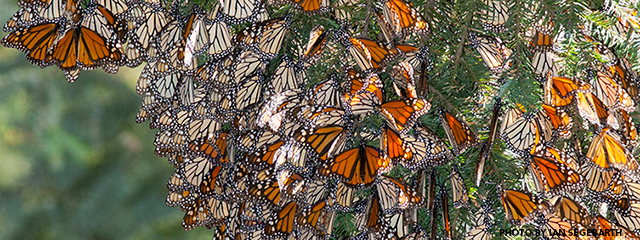The Holbrook Explorer

Monarch Butterfly Migration, Facts and More
Monarch Butterfly Migration, Facts and More
No butterfly makes a journey quite like the Monarch. These cold-blooded butterflies are unable to survive long winters, so millions of Monarchs migrate south every fall, seeking warmer temperatures. Migration is not uncommon for butterflies and moths; however no butterfly travels as far as the Monarch, which has been known to journey up to three thousand miles. Monarchs begin migrating south during the fall. Monarchs inhabiting the western states travel to California, while Monarchs from the east travel to the mountains of Mexico. As spring approaches the Monarch becomes more active, eventually migrating back north in February and March, preparing to lay their eggs and start the lifecycle all over again. As the millions of butterflies prepare to return north here are some interesting facts about the Monarch:
- A Monarch metamorphosis from an egg to an adult butterfly takes approximately 30 days.
- Female Monarchs lay on average 100-300 eggs during their lifetime.
- Monarch caterpillars feed on Milkweed. Many species of Milkweeds are toxic, therefore making Monarchs toxic to potential predators, causing a bad taste or vomiting.
- Adult Monarchs use taste receptors on their feet to find flower nectar, which is their main source of food.
- Millions of Monarchs migrate each year. They cluster together on trees, often covering entire trunks and branches.
All information and facts gathered from www.monarchwatch.org

